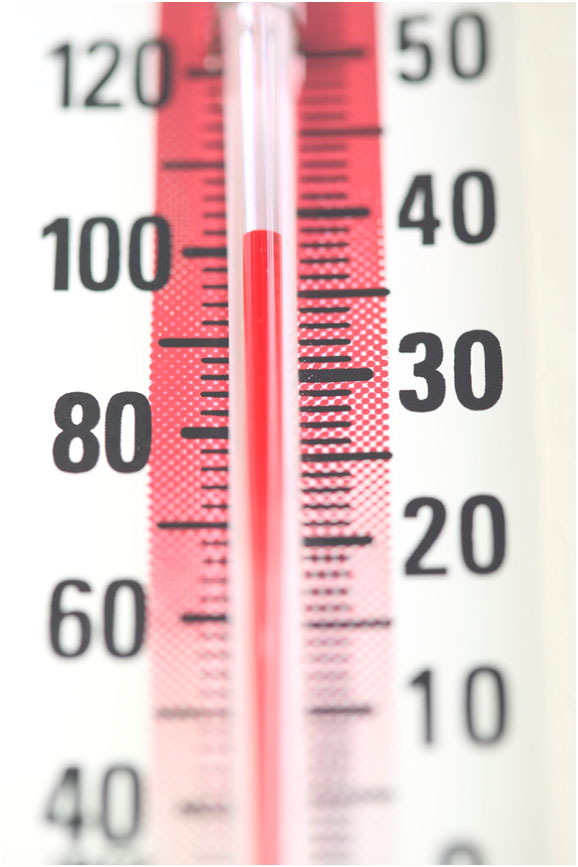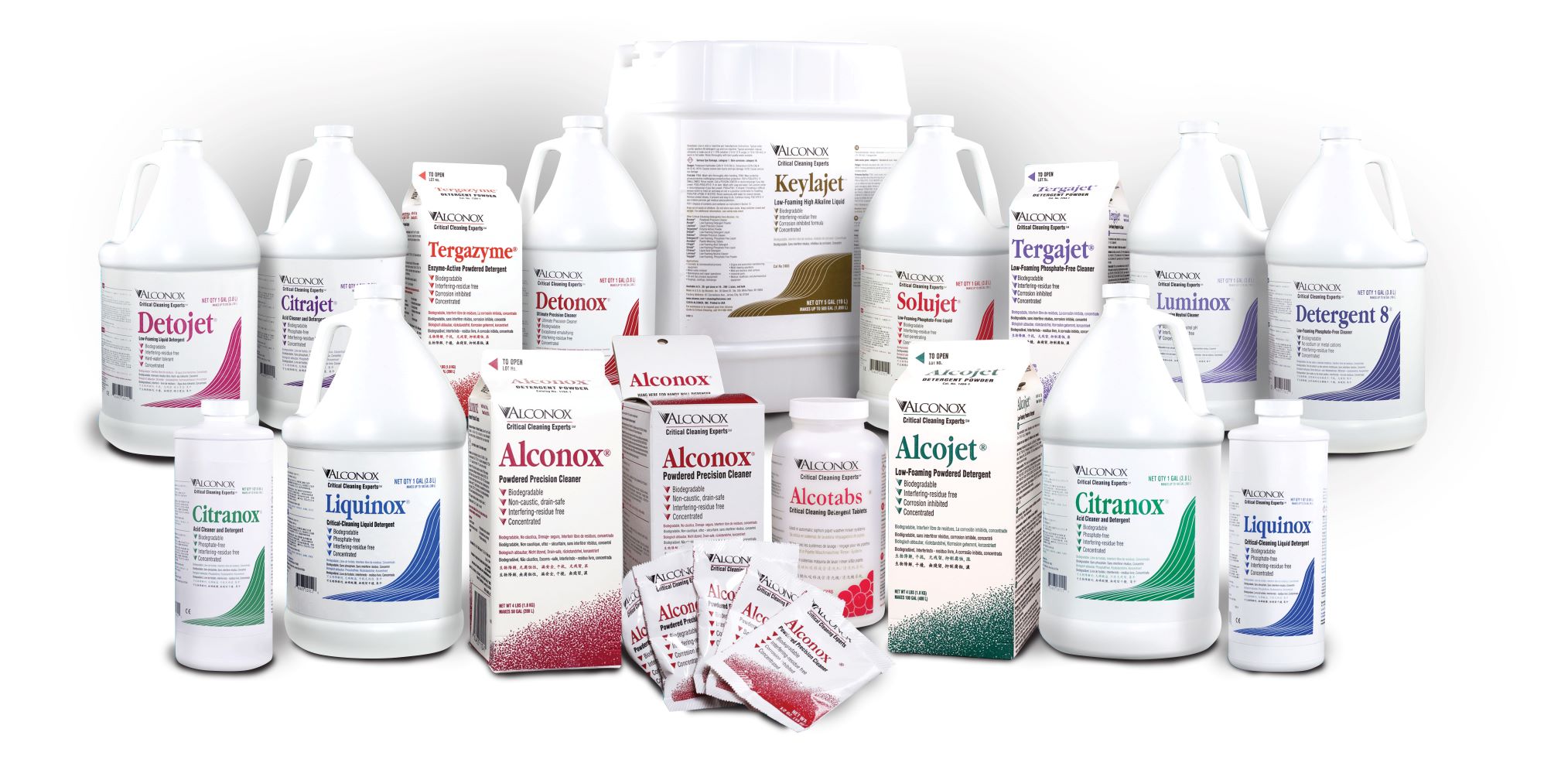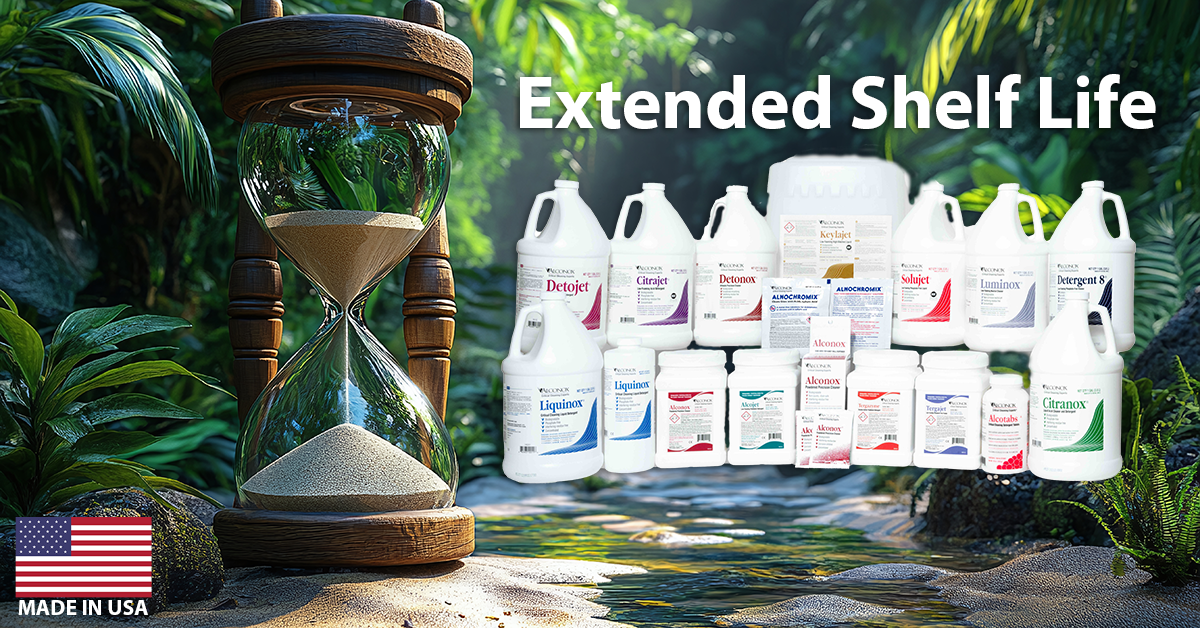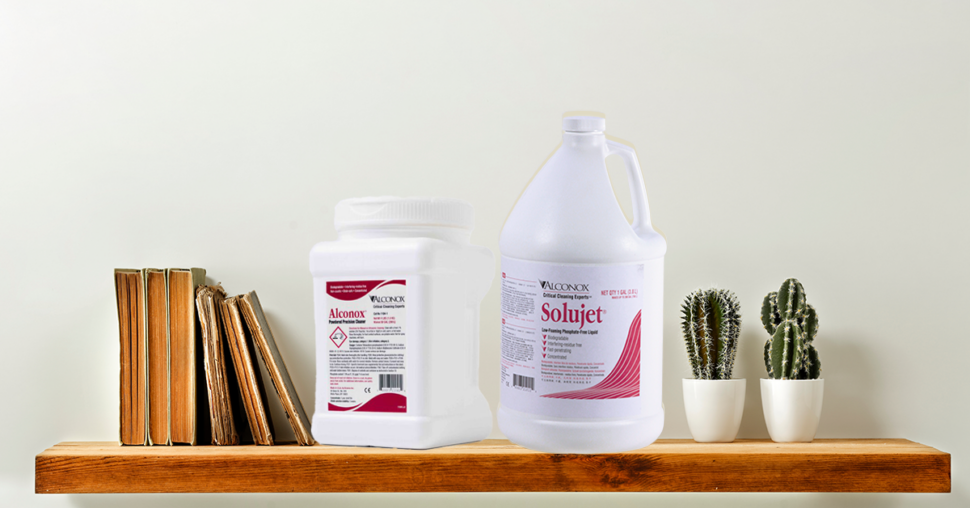
Q: We use your product to clean residual contamination off the surface of mixed metal boards. We are currently using 1% Liquinox in DI water at 50°C. Can you please comment on Alconox’s recommendation for a cleaning temperature? Is 50°C recommended or is another temperature preferred?
A: There is nothing wrong with cleaning at 50 deg C. Every 10 deg C you go up in temperature with Liquinox™ Critical Cleaning Liquid Detergent, the cleaning goes twice as fast. As far as the Liquinox solution chemical cleaning action is concerned, the rate of cleaning improves as you rise in temperature all the way to boiling.
With ultrasonic cleaning, the transfer of ultrasonic energy reaches a maximum at about 65 deg C. As you increase in temperature above 65 deg C, the energy transfer drops, but the evenness of the distribution of ultrasonic energy improves.
Because of the increased rate of chemical cleaning and the improved distribution of energy with ultrasonics, the optimum temperature for cleaning with Liquinox detergent in ultrasonics is above 65 deg C. The amount of cleaning that occurs due to chemical mechanisms is usually greater than mechanical mechanisms, so it is less important to be at the optimum mechanical energy temperature of 65 deg C.
In a practical sense, the hotter you clean, the harder it is to maintain temperature and the more evaporation of water you have. Most people do not clean at temperatures above 80 deg C because of concerns about heat loss and evaporation.
A cleaning temperature of 50 deg C will take longer than cleaning at 65 deg C or higher. If you have the time, there is nothing wrong with cleaning at 50 deg C. If you want to clean faster, by all means raise the temperature. You can optimize mechanical energy by cleaning at 65 deg C. You can optimize chemical energy with more uniform mechanical energy at 80 deg C while not making it too hard to maintain temperature and not have too much evaporation. Either way, you should be able to use shorter cleaning times if you clean at temperatures higher than 50 deg C.
In principle, these guidelines regarding cleaning temperature are applicable to all Alconox, LLC detergents. In general, the only exception to this is a residue that goes through a phase change where there can be a dramatic increase in the rate of cleaning as you cross the threshold temperature of the softening or melting point of the residue (a wax residue melting for example). The other item to note with temperature is the substrate – it does not do much good to clean fast if you are destroying the substrate!
To request this or any Alconox, Inc. detergents for free, please complete the questionnaire at Get Sample. For more information about any one of our Alconox, Inc. detergents, consult the technical bulletin for each product. Or click here to access each of our detergent’s Safety Data Sheets.
Do you have a critical cleaning question for the experts at Alconox, Inc.? Search TechNotes to see if it’s been answered before or Ask Alconox.



